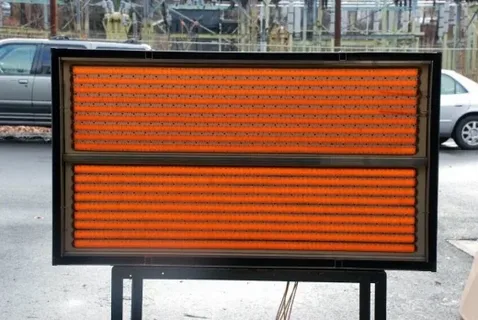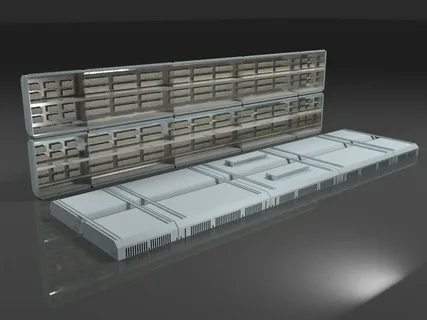Infrared panels are a great way to add warmth, comfort and ambience to your home. They are also an excellent way to increase the efficiency of your heating system because they work in conjunction with it. However, there are many brands out there that you have to choose from, and these can get confusing sometimes. Here we give you some tips on how to spot a genuine Fir Heating Panels.
What are Far Infrared Heating Panels?
Far Infrared Heating Panels are electric heaters that utilize far infrared rays, which are part of the electromagnetic spectrum. These rays are invisible to the human eye and can only be detected with special equipment.
Far infrared heaters use electricity (usually 110 volts) to generate heat through an internal process called resistive heating. It means they do not use flame or gas like other types, such as radiant or convection models. Instead, they radiate warmth into your home by emitting infrared light waves at different frequencies depending on their construction and design–which we’ll discuss in more detail later on!
Benefits of Far Infrared Panels
Far Infrared Panels are more efficient than other heating panels because they use less energy. They also last longer and are safer to run, as they do not produce dust or allergens. Far-infrared panels are also better for the environment because they don’t produce noise and use less energy, so that you can save money on your utility bills!
The benefits of far-infrared panels go beyond just saving you money, though – these panels are more pleasant than other heating panels and natural (i.e., not artificial). Far-infrared panels don’t produce any noise either; instead, all you’ll hear is the sound of nature itself – birds chirping outside your window, perhaps?
Factors to Consider Before Buying Ceiling Mounted Infrared Heating Panels
When searching for a new infrared heat panel, several factors must be considered. These include installation, safety and energy efficiency. It would help to watch for cost, quality and sizing or placement.
For example: If the space where you want to mount your infrared heater is too large or small for its intended purpose, then it may not work as well as it could have otherwise done so.
When purchasing any heating system, you must choose one that can be easily maintained without calling in an expert whenever something breaks down or malfunctions – this will save money over time!
You should also consider the amount of space your Ceiling Mounted Infrared Heating Panels needs to operate properly and any additional accessories that may be needed for installation (such as brackets and screws). If you’re buying an infrared heater for your home, you must ensure it fits your budget and leaves you with enough funds for other things.
Evaluating the Quality of Fir Panels
- Glass quality: The first thing you should do is make sure that the glass is tempered. Tempered glass is stronger than normal glass, so it can withstand high temperatures without breaking or shattering. If there are any visible defects in your panel’s glass, such as scratches or cracks, then this may indicate poor quality materials were used during manufacturing.
- Panel installation: Check that your heating panel has been installed properly with a gap between it and your wall–this will allow air to circulate freely around your room and prevent humidity buildup from condensing on top of your fir panel during winter months when heaters are running most often (and also keep mould from growing inside of them!).
- If you’re unsure if your heating panel is installed correctly, contact a professional to have them check it out. It will ensure that your panel is doing its job properly and efficiently!
Sizing and Placement Considerations for Radiant Panels
Radiant heating panels are available in various sizes, making them ideal for use in almost any room. Depending on your needs and preferences, they can be mounted on the ceiling or wall. Because they heat objects directly rather than air, Radiant Panels are often used in homes with existing forced-air systems. However, some homeowners choose to install radiant heating systems as their primary source of warmth because they provide better comfort than forced-air systems alone.
Radiant panel tiles should never be installed in wet areas like bathrooms or kitchens since water will damage them over time. Don’t let this stop you from considering them for other rooms! The heat generated by these tiles reflects into the room through mirrors placed behind them (or sometimes directly onto adjacent walls), so there’s no need for an additional venting system with these products either; just make sure your windows have proper insulation before installing any radiant heating system because otherwise, you’ll lose all its benefits by letting too much cold air seep through cracks around windowsills etcetera.
Energy Efficiency and Cost Savings with Glass Radiant Heating Panels
Energy efficiency and cost savings are two critical factors when choosing a heating system. Radiant panel is an excellent choice for both, as they are highly efficient and cost-effective. The glass radiant panel used in these systems have a high R-value (up to R4), meaning they can retain heat well. In addition, this type of panel is also made from non-toxic materials that do not emit harmful fumes or chemical emissions into your living space as other heating systems may.
The safety features built into Glass Radiant Heating Panels include:
- The anti-slip surface so you don’t slip on them.
- Easy installation – just lay them down wherever you want!
Safety glass is non-toxic and will not emit harmful fumes or chemical emissions into your living space. It means they are safe in your home, especially if you have children or pets.
 Safety Features to Look for
Safety Features to Look for
When purchasing an FIR panel, you should remember that safety features are essential to the product. The benefits of buying an FIR panel with safety features include the following:
- Safer operation
- Reduced risk of fire or burns from overheating
- Longer lifespan for your heaters (and therefore lower maintenance costs)
To find out if a particular model has these features and is safe to use, make sure it has the following markings:
- CE mark indicates compliance with EU regulations on electromagnetic compatibility (EMC), which ensure that products do not interfere with other electrical devices nearby. It also means they meet certain minimum standards for electronic components (such as capacitors), so they don’t overheat when operating at high temperatures. It also helps prevent fires caused by short circuits within electrical systems due to dust buildup inside them over time.”
Tips for Finding Reliable Suppliers of Heating Panels
- Look for information about the products and services on the supplier’s website.
- Ask for references from customers.
- Ask other suppliers in your area who they use, and get their opinion of that supplier.
- Get a copy of the supplier’s insurance certificate, which should be posted prominently on their website or available upon request. If it isn’t posted anywhere, ask them why- you don’t want to buy anything without knowing there’s some protection if something goes wrong!
- Check whether your potential supplier has been licensed by city hall or state authorities as required by law; this is especially important if you’re buying heating panels for large spaces like warehouses or factories where there may be multiple vendors operating nearby each other with different licenses (and therefore different policies). You’ll find out quickly enough if someone doesn’t have one when you go over all this stuff together during negotiations later down the line 😉
Installation and Maintenance Guidelines for Glass Heating Panels
- Installation is easy.
- Maintenance is easy.
- How often to clean: Once or twice a year, depending on how much use the Glass Heating Panels gets and how often you use your other heating systems. If you have a wood stove or fireplace used frequently, consider cleaning your glass panel more frequently than every two years (or even once yearly).
- How to clean: Use warm water and mild soap (such as dishwashing liquid), then rinse well with clear water before thoroughly drying with a soft or chamois cloth (such as those used for polishing automobiles). A soft microfiber cloth works well too! It will keep dust from settling on top of the panel’s surface, which could scratch up against other surfaces when moved around during cleaning–it also keeps fingerprints off of it nicely so they don’t show up when looking at them from different angles later down the road.
FAQs
Q: What is the difference between radiant and far infrared panels?
A: A radiant heating panel works by heating objects in the room, while a far infrared heating panel heats people and other living things.
Q: What are the benefits of purchasing a heating panel?
A: If you need to warm up your home quickly on cold days, then this is one of the best ways to do so! In addition, they can help keep your house more comfortable in general by keeping rooms at an optimal temperature throughout all seasons. It makes them perfect for living in areas where temperatures vary greatly throughout the year.
Conclusion
The bottom line is that infrared heating panels are a great investment for your home. They can provide radiant heat, which is much more efficient than conventional methods like radiators or heaters.



